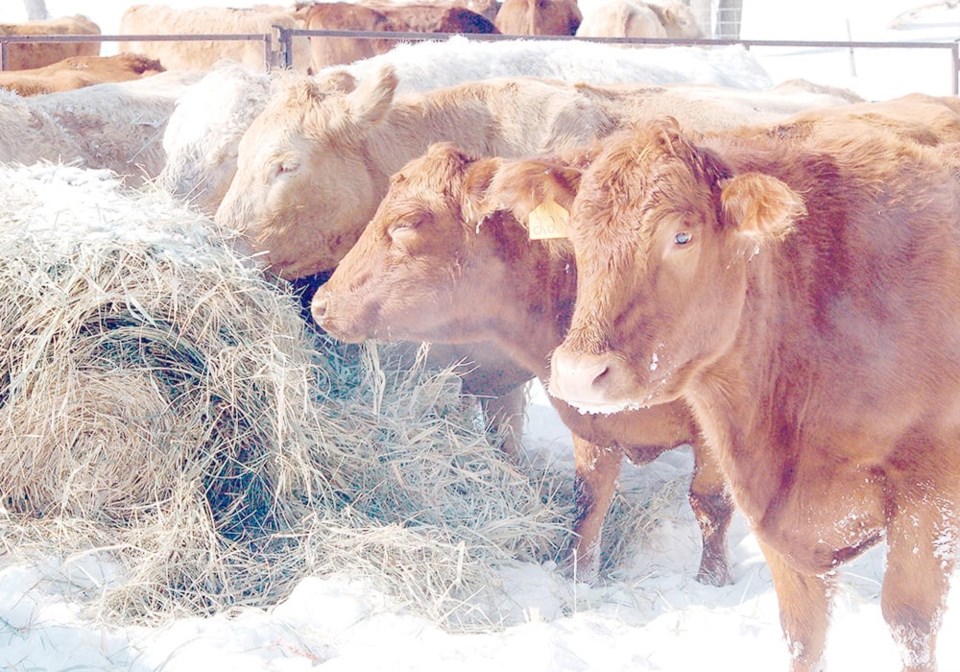WESTERN PRODUCER — When all costs are factored into the equation, raising cattle should be more profitable than growing crops in 2024 — in some cases, much more profitable.
“Right now, I can tell you that the returns per acre are higher than any of the crops,” said Ben Hamm, a farm management specialist with Manitoba Agriculture.
“If there are any people in the grain industry looking for something that makes a little bit more money, maybe it’s time to buy some cows.”
Hamm shared the latest estimates for beef profitability at Manitoba Ag Days, a trade show held every January in Brandon.
Using the example of oats, the Manitoba Agriculture cost-of-production guide says oats will return a profit of $26 per acre over the fixed and input costs.
For a 300 cow beef herd, where the producer feeds corn silage, Hamm pegs the profitability at $72 per acre.
That figure is from a scenario where a cattle producer has little equity in land and equipment.
If a farmer owns most of the land and machinery, the profits would be much higher.
The Manitoba Agriculture cost-of-production guide for beef says the returns over operating costs are $158 per acre.
“Most of us in the industry aren’t financing 100 percent of it. We’re probably closer to 80 to 85 percent of equity in the farm,” said Hamm, who farms in southeastern Manitoba.
“When we do look at what is financed and what is not, it makes a huge impact on (profitability).”
The critical number right now in the beef industry is price.
Calves that are 500 to 600 pounds are selling above $350 per hundredweight.
The strong prices have convinced a few more farmers, or wannabe farmers, to raise cattle.
“I have a friend’s son who has been an engineer out in Alberta but ran a small hobby farm out there,” said Tyler Fulton, a cattle producer from Birtle, Man.
“He sold a quarter section and bought 10 (quarters) here (in Manitoba). Never previously in the beef industry. He moved back about two months ago.”
Hamm has heard similar stories.
Some people have sold their $15,000 per acre land in Ontario to buy farmland for cattle production in Manitoba.
That’s positive, but the influx of new people hasn’t moved the needle on beef production in Manitoba:
- On July 1, 2023, the number of beef cows in the province was 389,000.
- That’s down 36,000 from July 1, 2021, when the cow herd was 425,000.
Nonetheless, there is more enthusiasm in the cattle industry.
A crowd of more than 200 listened to Hamm’s presentation at Ag Days.
Children are taking over their parents’ ranches and others are selling assets to buy pastureland in Manitoba.
Hamm is concerned, however, about the financial barriers for new entrants.
“It’s so hard for a young producer to come in and buy land, buy equipment and buy the cattle. You (need) supplementary income to start off that way,” he said.
“If we have to finance the entire farm … what do the economics look like? It’s pretty bleak.”
He encouraged all farmers, experienced and novice, to do their homework before purchasing a chunk of land.
“With land values the way they are, (the) productivity becomes so much more important,” he said.
“You have to run the math, work it backwards, to see what value that land is producing…. You need as much history and information as you can (get).”
Producers should also consider the available risk management tools, such as livestock price insurance and Agri-Stability, Hamm said.
“Risk has to be something we look at…. We’re right at the peak (of prices). Maybe it will continue, maybe it will go sideways,” he said.
“There’s so many dollars left on the table by producers who aren’t in Agri-Stability. It is a harder program to grasp, but once you do, it is the best (tool) we have for production insurance. It’s something I would really encourage you to do.”




